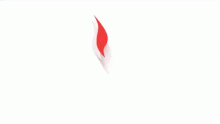Improving Your Safety Culture
During our years of working with many diverse companies, we have seen the inner workings of organisations that span across every stage of the safety culture maturity model, each with their own unique traits and characteristics. But of them all, there’s one type of cultural trait that stands out as a key indicator of poor cultural maturity and safety performance. That trait is a culture that’s filled with blame and avoidance.
A key factor that’s especially prevalent in organisations with poor safety performance, a culture that’s filled with blame and avoidance attitudes and behaviour is one where workers have a low sense of personal accountability over the safety of themselves and the people around them. In this type of unproductive culture, instead of staying safe because they choose to, workers avoid taking responsibility for their actions and only behave safely if they’re made to feel like they have to. The behaviours observed within this type of culture are typically fuelled by an underlying fear of negative repercussions that’s often unintentionally driven by the behaviours of their leaders.
In these organisations, when a safety issue inevitably arises, there’s a tendency to focus on finding a person to blame for the incident—instead of focusing on finding and addressing the root cause of the problem. A clear warning sign that this might be happening in your workplace is when incident investigations tend to highlight worker behaviour as the key driving factor. This is also often coupled with a primary focus on identifying and punishing the workers involved. While it is important to understand what contributed to an incident occurring, focusing on finding workers to blame, instead of focusing on how you could have prevented the incident in the first place, robs you of opportunities to leverage near-misses and safety incidents as the key learning opportunities that they are. It doing so, it also instils a fear of retribution within your workers when they consider reporting potential safety hazards in the future. In turn, this motivates them to avoid taking responsibility for their actions as a way to protect themselves from harm.
As you can see, this type of culture simply isn’t conducive with optimal safety performance and holds many organisations back on their journey towards safety excellence. The good news is that if you’re in a culture filled with blame and avoidance, there are steps that you can take to swing the pendulum back in the other direction.
Elevate to a culture of safety ownership
On the other side of the spectrum lies a culture that’s focused on accountability and ownership. Workers in this type of safety culture take personal ownership over safety and understand the importance of choosing to engage in safe behaviours. When incidents do occur, organisations focus on identifying the root cause of the problem instead of focusing on who should be blamed. In doing so, they’re able to learn from the incident and actively minimise the likelihood of a similar incident occurring again in the future, therefore also improving their overall safety performance.
Coupled with a focus on positively reinforcing a worker’s choice to behave safely and openly communicating the importance of their safety vision and values, these organisations actively strive to help their workers understand the importance of taking personal ownership over their safety. This solution-focused approach also leads to higher levels of safety compliance, even when workers aren’t under supervision, as there’s now an increased level of psychological safety in the workplace. That is, a measure of how safe a worker feels to share their thoughts, ideas or concerns without negative repercussions, such as when lodging a safety report.
But as an organisation that’s trying to nurture a culture of accountability and ownership, where do you even begin? Well, it starts with having a clear safety vision.
The journey starts with a clear safety vision
Your safety vision and mission set the standard for what’s expected from your workers. With a clear vision in place, it gives your workers a shared goal to work towards as they go about their daily activities and it communicates that as an organisation, you value safety. A key problem with cultures filled with blame and avoidance is that many workers feel a lack of safety commitment from their leaders. In turn, they start to develop more trust and confidence in each other than they do in their leaders, fuelling a mentality of “them versus us” and detracting from the goal of instilling a sense of personal ownership over safety.
So, to help you start nurturing a workplace of safety ownership, here are a few strategies that you can use to start driving positive changes today:
- Review your safety vision and clearly define the values and behaviours required to bring it to fruition. Ask yourself a simple question—is it clear, understood and communicated throughout all levels of your organisation?
- Make sure that you actively enlist your leaders, get their buy-in and help them understand the critical role that they play in bringing the safety vision to life.
- Audit what you’re currently doing to better understand exactly what’s driving you forward towards your safety vision and the gaps that are holding you back from achieving it.
- Make time to create an implementation plan and develop specific goals and activities to help your team engage with and aspire towards achieving your vision.
- Let your workers know exactly what the plan is, why you’re implementing it and the execution timelines involved to get your entire team on the same page.
- As you’re executing your plan, publicly celebrate successes and safety improvements while also ensuring that you clearly and transparently communicate with your workers about any issues that arise.
- Set key measures of success and KPIs to help your people maintain a sense of sustained focus towards achieving each one, keeping them motivated and enthusiastic about striving towards your safety vision.
In essence, it’s about shifting your focus away from punishing your workers and towards positively rewarding them for working towards your shared safety vision instead.
Find fault with the incident – not with your people
When a safety incident inevitability arises, it’s far too easy to focus your efforts on finding and persecuting the individuals that contributed to it. But in order to drive your safety performance forward, you need to shift your focus by ensuring that your investigations are based around finding a solution to the problem instead. In doing so, you can turn near-misses and incidents into key learning opportunities that’ll drive your safety performance forward.
Beyond that, this shift in your focus also helps nurture a sense of psychological safety within your team, making them more likely to complete regular safety reports and take personal ownership over the safety of themselves and their peers as the need to shift the blame or responsibility dissipates. Otherwise, you might find yourself stuck in a cycle of blame and avoidance with a team that have more confidence in each other than they do in their leaders.
Speak to our Training Consultants T: 01928 515977 for further information.




